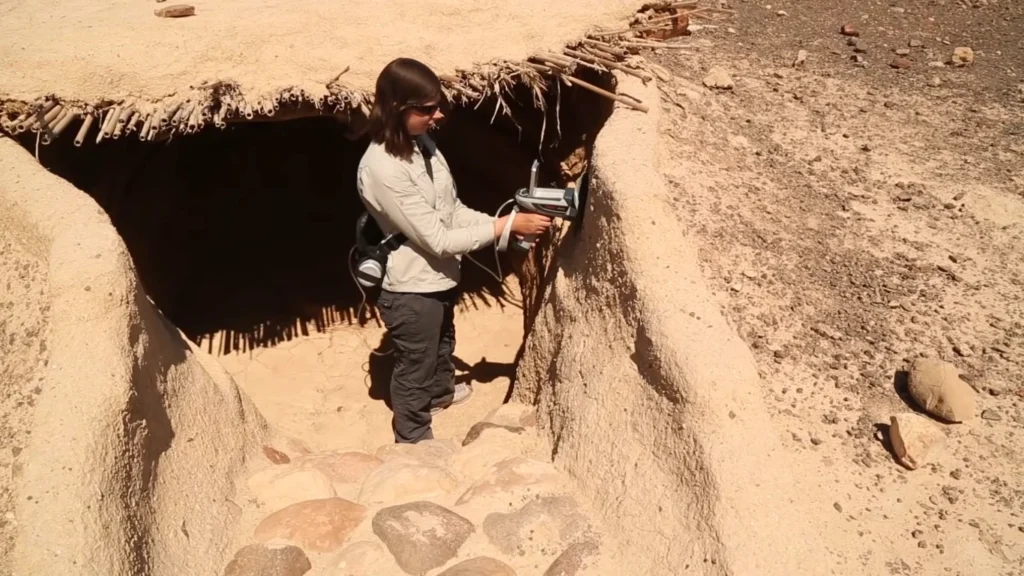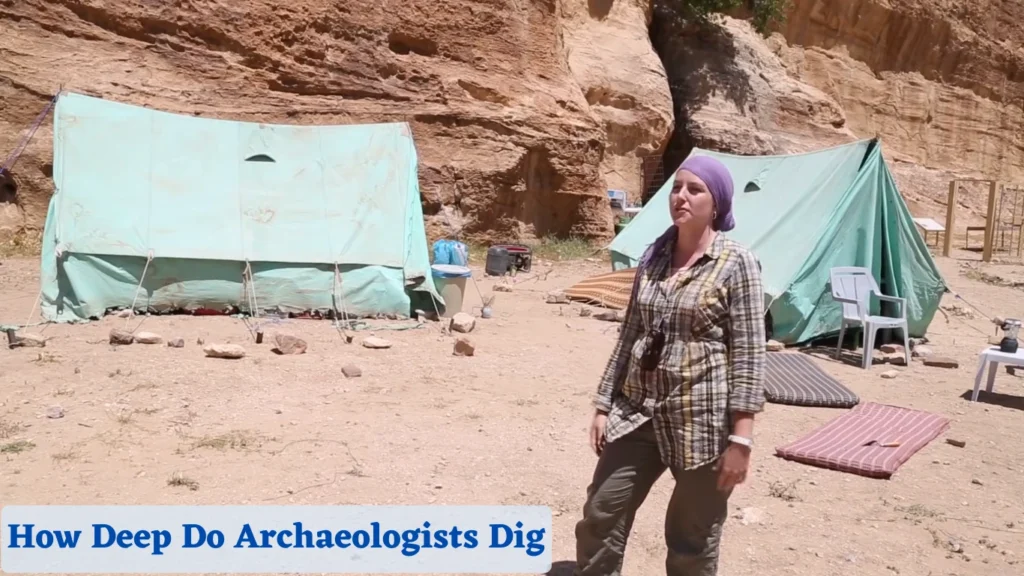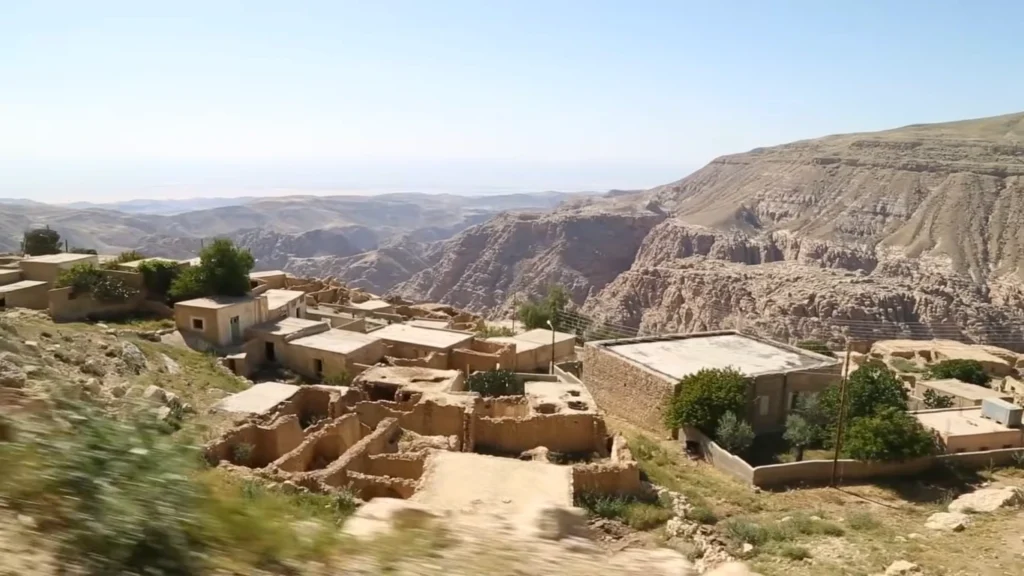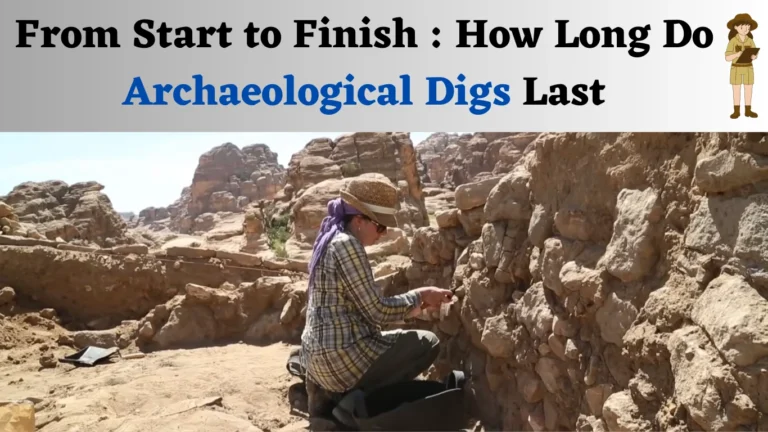Welcome, fellow curious minds Today, we embark on a whimsical journey into the age-old question: How long do archaeological digs last ? You might envision bow-tied scientists shuffling cautiously through dusty tombs, engaged in a never-ending quest for ancient artifacts.
But fear not, dear reader, for this blog post will dive deep into the world of archaeological digs with a sprinkle of humor and a dash of informality. So grab your shovels, dust off your archaeologist hats, and let’s dig in!

How Long Do Archaeological Digs Last ? The Dig-ception: Unearthing the Mystery
What is an archaeological dig?
Before we set our sights on the duration, let’s unravel the enigma surrounding these digs. Archaeological digs are excavations that archaeologists undertake to unearth and examine evidence from past civilizations. They involve digging and meticulously documenting findings to build a clearer picture of our historical tapestry.
Hold your excitement tightly because archaeology is not simply treasure hunting like Indiana Jones, as alluring as that may be. It’s a meticulous and scientific process, conducted step-by-step, in pursuit of knowledge about our ancestors. But just How Long Do Archaeological Digs Last?
Hours Upon Hours: The Time Invested
Archaeologists are patient beings, aren’t they? If they didn’t have the patience of a saint before embarking on this career, they certainly do now! You see, dear reader, archaeological digs aren’t like your average day at the beach, where you casually plop your lounge chair down, slather on some sunscreen, and enjoy the waves. No, no, no. Archaeological digs require time. Lots and lots of time.
Digs can last anywhere from a mere few weeks to several years—yes, years! But fret not, aspiring Indiana Joneses and Lara Crofts, as not all digs resemble the slow, torturous crawl of a snail. Sometimes, they do have time constraints. Archaeologists might be given a specific timeframe, especially if the project is funded by grants or universities.
Into the Unknown: Factors Affecting Dig Duration
Why does archaeological excavation take so long?
Ah, my insightful adventurer, I’m glad you asked! Several factors influence the duration of a dig. Firstly, the size and complexity of the site play a key role. An itsy-bitsy pottery shard buried beneath a garden may yield results quicker than a sprawling ancient city.
Additionally, the nature of the artifacts and materials found also affects the length of a dig. Some artifacts may be protected by delicate layers of dirt, requiring meticulous brushing and care. It’s like the archaeologist is giving each artifact a spa treatment, only with more dirt and fewer cucumber slices.
Don’t forget, my inquisitive friend, that Mother Nature can be quite the party crasher. Adverse weather conditions, fauna and flora, and even unexpected geological formations can slow down the excavation process. Just imagine trying to dig while being persistently chased by territorial squirrels or while navigating an underground maze of ancient mole tunnels. Quite the adventure, wouldn’t you say?
Slow and Steady Wins the Race: The Process of Archaeological Digs
Let’s step into the shoes of our archaeologist, shall we? When they embark on a dig, they begin with careful planning and surveying. They analyze historical records, maps, and seductive whispers from ancient relics to pinpoint the perfect spot to start digging. Once they choose their battlefield, it’s time to roll up those sleeves and get dirty.
The excavation process itself is a delicate dance of patience and precision. Archaeologists use a variety of tools to unearth the past with surgical precision. Trowels, brushes, shovels, and even dental picks and tiny spoons become their trusted sidekicks.
As they remove layers of dirt, they meticulously document each finding, mapping out their discoveries like cartographers of the past. Notebooks filled with sketches and logs become a testament to their dedicated work.
Tales From the Dig: The Unexpected and the Quirky
Did you know that archaeologists venture into some rather bizarre situations? Ah, put on your adventure goggles, my curious companions, as I bestow upon you some amusing anecdotes straight from the trenches.
Picture this: an archaeologist, deep in concentration, gently brushing away dirt from an ancient artifact, only to be greeted by a snappy surprise. Yes, a crab hiding cozily beneath the relic! Who knew crabs were such fans of history? Our archaeologist friend swiftly dodged the snappy encounter, joyfully exclaiming, “Just another day at the office!”
But let’s not forget about the ever-present swarms of insects. It seems bugs and archaeology go hand in hand, like the dinosaur and the meteor. Flies, mosquitoes, and biting critters abound, eager to feast on unsuspecting diggers. One could say archaeologists have become experts in discovering new species of bugs along with ancient civilizations.

Each of these steps can take varying amounts of time depending on the specific circumstances of each dig. Examples of How Long Do Archaeological Digs Last is given Below –
- A small-scale rescue excavation of a threatened site may last only a few days or weeks to salvage as much information as possible before it is destroyed or damaged by development or natural disasters.
- A medium-scale survey excavation of a known site may last a few months to test hypotheses and collect samples for further study.
- A large-scale research excavation of a complex site may last several years to explore its full extent and depth and answer multiple research questions.
However, some digs may last longer or shorter depending on various factors. For instance we can get the an idea of How Long Do Archaeological Digs Last from the following –
- The Korea Institute of National History conducted a 10-year-long excavation of Gyeongju Historic Areas in South Korea from 2007 to 2017 to uncover its rich cultural heritage.
- The University of Pennsylvania Museum conducted a one-day-long excavation of its own courtyard in Philadelphia in 2018 to celebrate International Archaeology Day.
READ MORE – 1 week or Months | How Long Is Dig Season In Egypt – Know Details
What Happens at an Archaeological Dig?
At an archaeological dig, a group of skilled professionals, including archaeologists, anthropologists, historians, and various experts, come together to unravel the secrets of the past. The site selected for excavation is carefully chosen based on historical significance and the likelihood of uncovering valuable artifacts. The primary objective is to learn about the culture, lifestyle, and practices of ancient civilizations.

What are Archaeological Methods ?
Archaeologists employ a variety of methods to uncover and document historical artifacts. These include:
- Excavation: The process of carefully digging and removing layers of soil, debris, and sediment to reveal hidden structures and artifacts.
- Surveying: Mapping out the excavation site to gain a comprehensive understanding of its layout and features.
- Stratigraphy: Analyzing the different layers of soil and sediment to determine the sequence of events and the age of the artifacts.
- Documentation: Carefully recording each find, including detailed descriptions, photography, drawings, and measurements.
- Laboratory Analysis: Conducting various scientific tests, such as carbon dating or DNA analysis, to gather additional insights about the artifacts and the people who created them.
How Deep Are Archaeological Digs?
The depth of an archaeological dig can vary significantly depending on the location and objective of the excavation. Some digs may only require shallow excavations, while others may require digging several meters beneath the surface. The depth is determined by factors such as the depth of the historical layers, the preservation of artifacts, and the resources available for excavation.

What is the Oldest Archaeological Dig?
Archaeological digs have been taking place for centuries, stretching back to the earliest recorded accounts of human history. One of the oldest known archaeological digs is the excavation of the ancient city of Troy in modern-day Turkey. This legendary site, made famous by Homer’s “Iliad,” was first excavated by German archaeologist Heinrich Schliemann in the late 19th century. The discovery of Troy provided valuable insights into the ancient world and set the stage for future archaeological endeavors.
How Much Does an Archaeological Dig Cost?
The cost of an archaeological dig can vary significantly depending on numerous factors, such as the location, duration, size of the excavation site, and resources needed. It involves expenses related to permits, equipment, labor, transportation, accommodation, and analysis of the findings. The budget for an archaeological dig may range from a few thousand dollars for small local projects to millions of dollars for large-scale international excavations.
How Do Archaeologists Know When to Stop Digging?
Archaeologists employ a combination of scientific methods and judgment to determine when to conclude an excavation. The decision to stop digging is based on several factors, including the goals and objectives of the project, the resources available, the rate of discoveries, and the preservation of the site. Once the research questions have been adequately addressed, and the excavation has reached its predetermined objectives, the archaeologists conclude the dig, ensuring the proper preservation of the site for future studies.

Why Do Archaeologists Stop Digging When They Hit Water?
In some archaeological sites, encountering water can pose a significant challenge. While water can sometimes provide important information about past environments and human adaptations, it can also cause difficulties in excavation. Water can cause the site to collapse, damage fragile artifacts, or make it challenging to properly document and preserve the finds. Consequently, archaeologists are often compelled to conclude the excavation when water becomes too prevalent, shifting their focus to analyzing the recovered artifacts and documenting their findings.

The Difference Between Archaeological Exploration and Excavation:
| Archaeological Exploration | Archaeological Excavation |
| The initial stage of the archaeological process | The subsequent stage of the archaeological process |
| The goal is to identify, locate, and evaluate potential archaeological sites | The goal is to uncover and study artifacts, structures, and other remains of past human cultures and societies |
| The methods include survey, remote sensing, sampling, testing, and mapping | The methods include digging, recording, processing, analyzing, and interpreting |
| The outcome is a preliminary assessment of the site’s significance, condition, and research potential | The outcome is a detailed reconstruction of the site’s history, chronology, function, and meaning |
Dusting Off the Layers: The Conclusion
Hope you got the answer regarding the question How Long Do Archaeological Digs Last ?
As we brush off the last remnants of dirt from our adventure, it’s time for a concise recap, my intrepid explorers. Archaeological digs can last anywhere from weeks to years, depending on factors such as the size, complexity, and nature of the site. The process requires patience, precision, and perhaps a sense of humor to endure the unexpected encounters and challenges that arise along the way.
Oh, the stories we uncovered! From surprise crab visitors to relentless bug armies, archaeologists find themselves in peculiar situations time and again. Yet, their passion for revealing the secrets of our past fuels their dedication to enduring these extraordinary obstacles.
If our journey together has piqued your interest, fear not! Many resources and organizations offer ways for you to delve deeper into the captivating world of archaeology. Museums, educational institutions, and archaeological societies are waiting to welcome you with open arms and timeless artifacts.
So, gather your excavating tools, dear readers, and embark on your own archaeological adventure. Who knows what mysteries lie beneath the surface, waiting for your curious spirit to uncover? Just be prepared for some dust, a few friendly critters, and a lifetime of stories to tell!
Remember, the world beneath our feet is an ancient library, and with each dig, we turn another precious page in the book of humanity.
Happy digging, fellow adventurers!
FAQ
How do archaeologists know when to stop digging?
Archaeologists know when to stop digging when they reach the natural soil or rock, which means that there is nothing more to find there. But sometimes, they have to dig deeper, because some sites have more than one layer of things that people left behind.
What happens after an archaeological dig?
After an archaeological dig, the archaeologists have to take care of the things that they found. They have to clean, label, catalog, preserve, analyze, and interpret the archaeological material they collected from the dig. They also have to share what they have learned. They have to write reports, publications, presentations, exhibitions, and outreach activities to tell others about their findings and conclusions.
Where do archaeologists sleep?
During an archaeological dig, researchers typically reside in makeshift camps near the excavation site. These camps are essential for easy access to the dig and allow the team to be immersed in their work. Often, simple accommodations, such as tents or temporary structures, are set up to provide shelter and a resting place for the archaeologists.
Why do archaeologists have to dig a lot?
Archaeologists have to dig a lot because digging is the main way of finding and studying the things that people left behind in the past. Digging allows archaeologists to uncover and record the things that can tell us about the history, chronology, function, and meaning of archaeological sites.
Why are ruins always buried?
Ruins are always buried because of natural and human processes that cover them with soil and debris over time. Some of these processes include erosion, sedimentation, vegetation growth, animal activity, flooding, landslides, earthquakes, volcanoes, fires, wars, looting, and construction.
Do Archaeologists Dig Up Bones?
Yes, archaeologists do occasionally uncover bones during their excavations. These bones can help shed light on ancient human or animal populations, their health, and lifestyle. The discovery of bones allows archaeologists to analyze the diet, diseases, and physical characteristics of ancient civilizations, contributing to our understanding of the past.
Do Archaeologists Dig Up Bodies?
Unlike forensic archaeologists who work on crime scenes, archaeologists primarily focus on ancient civilizations and their remnants. Archaeologists do not intentionally dig up bodies, as their aim is to study the culture and history of past societies through the artifacts they left behind.
Why Do Archaeologists Dig Up Stuff?
Archaeologists dig up artifacts and objects from the past to uncover clues about historical cultures, civilizations, and their way of life. By analyzing these objects, they can gain insights into social norms, technological advancements, religious practices, and artistic expressions of ancient communities, enriching our understanding of human history.
Why Do Archaeologists Have to Dig in the Dirt?
Archaeologists dig in the dirt because many historical artifacts and structures are buried beneath the surface. The earth acts as a natural preservative, protecting these valuable remnants from erosion and decay. By excavating carefully and systematically, archaeologists can unearth and study these hidden treasures, unraveling the mysteries of the past.
